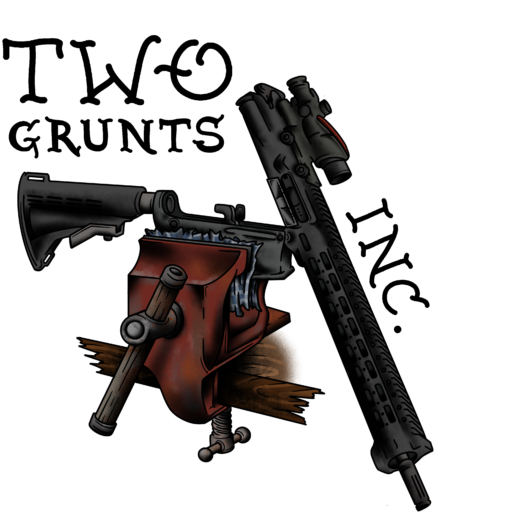Your cart is currently empty!
Rucksack Packing: Drop-in Method
This guide goes over Rucksack Packing: Drop-In Method. We learned it from @nomadicfieldcraft. Read on to learn more about this great method of packing your ruck!
If you’re like us and trying to build your skills in the world of fieldcraft, you definitely need to give Nomad a follow. He is a super underutilized asset. There’s tons of knowledge to be learned from others on here and Nomad is right up there with a very important skill set.
During one of our conversations, @nomadicfieldcraft mentioned the way he packs his ruck – utilizing both a main and a secondary (or assault pack), called the drop-in method. Both my brother and I had never heard of or practiced this method as we had always strapped our assault packs to our main system and had two separate systems that mutually supported one another.
Nomad went on to describe the method which we go over in this guide. After hearing this method my brother and I both agreed this was a way superior way to pack a ruck and operate out of. We wanted to make this guide to share with everyone else a method we believe to be better and one that most of you (probably) don’t use.
What is the drop-in method?
A fully loaded assault pack gets dropped into a lighter-loaded rucksack. The concept is based on the idea that a fully loaded assault pack can be easily removed without the need to cross-load equipment from a rucksack at night and also not having to carry a fully loaded assault pack attached to the outside.
Carrying completely separate systems that do not work simultaneously to support one another does not provide a seamless carry system, but rather a complicated way to carry your gear.
Being able to carry one compact system that works hand in hand together is much more efficient than carrying two separate systems.
In Theory
Having a fully prepped assault pack with the majority of your mission essential equipment already staged in it allows the easy transition from carrying just the assault pack or the ruck.
Carrying less sustainment gear in your rucksack, and having a much higher fieldcraft baseline skill set allows you to carry a much lighter load between both systems; assault pack or rucksack.
Having a realistic fully functional 24-hour gear set in your assault pack will allow you to operate without the need for a ruck if emergencies arise, in which you are forced to ditch a ruck and not able to return to it.
In Practice (Examples)
While in the backcountry hiking with your family, you and your family go for a short day hike away from your main campsite where you have left your main rucksack. Your day bag/assault bag now has the right gear to supplement your needs in case your day hike turns into an overnight stay due to an emergency.
Conducting a mission on an objective with your fully loaded assault gear, coming under contact and not being able to return to your staged rucksack in the PB/RP.
Keep both the assault pack and rucksack streamlined. Do NOT strap gear to the outside allowing for ease to drop in the ruck and stay slick on the outside to not get caught up in obstacles/brush.
Assault Pack Gear List
Mission/Task drives gear. Carry what makes sense for YOUR task at hand, not what may or may not be applicable to YOUR task.
These suggestions are the MINIMUM of what should be packed:
- 24 hrs of food: MREs, dry food, field food, pot/cup, and stove to cook/boil water.
- 24 hrs of Water: Either actual water or the ability to procure and carry additional water. If carrying additional water, have a mix of bladder and or bottles.
- Sustainment Clothing: Climate/seasonal considerations, raingear top, insulation/warming layer top, 1x pair of socks, gloves.
- Mission Essential Equipment: Ammo, batteries, comms, emergency signaling devices, medical gear, etc. (See above)
- Miscellaneous Kit: Field Repair kit, baby wipes, additional cordage, and additional survival gear.
- EMERGENCY: Tarp or US Surplus Poncho with stakes and cordage. FIB (Fire in Bag)
Rucksack Gear List
MAXIMUM suggested gear list. Loaded from the bottom up to the top. The goal is to only fill 40-50% of the Rucksack, so the Assault Pack can be dropped in on top of sustainment gear.
Gear list:
- Sleeping System: 1x Sleeping bag, 1x Bivy Bag, 1x Blanket/Woobie.
- Additional Layers: Raingear bottoms, Top warming layer if not in Assault Pack, 1x Full Set of change of clothes, top, and bottom. 3x Socks and underwear.
- 72 hrs minimum of Food: Same breakdown as in Assault Pack but longer sustainability. Water is only carried in an Assault Pack, the idea is to resupply every 24 hrs.
- Miscellaneous: Hygiene Kit (toothbrush and paste, a bar of soap, microfiber towel, flip flops)
Final Thoughts
Thanks for making it to the end of this guide! If you got some value from this please make sure to like, share, and save it for later. We make these to help give people a baseline when making decisions for their next firearms or gear purchases.
And make sure to check out @nomadicfieldcraft. We truly consider him one of the best at what he does.
Be sure to read our other guides here!
